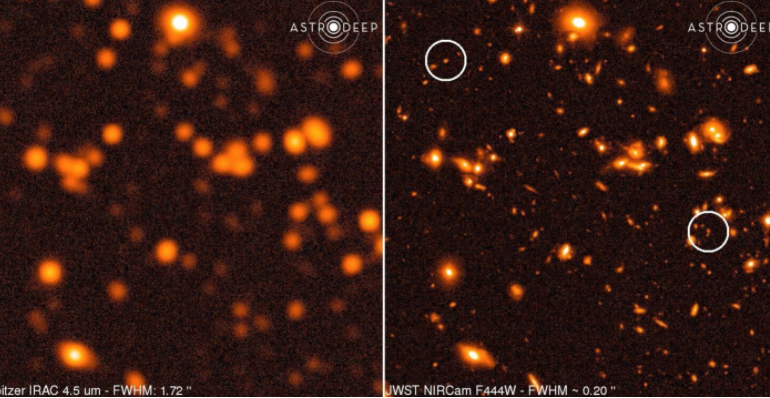The growth of galaxies in the Early Universe – V
LOCATION: Sport & Kurhotel at Bad Moos - Via Val Fiscalina 27, 39030, Sexten
DETAILS
Aim of the workshop
This workshop is a chance to discuss the nature and evolution of high redshift galaxies, from cosmic noon to re-ionization, as derived from a variety of observational evidence collected across the whole electromagnetic spectrum, and theoretical investigations.
In the tradition of the previous meetings we aim at bringing together members of the main extragalactic surveys and theorists to present their latest results and perspectives for the next future.
Science topics
The workshop will be on four scientific topics, listed below, that will guide the organization of sessions and discussions:
– How far are we from a complete statistical census of high redshift galaxies — especially for the most extreme populations (faint galaxies at z>6, passive galaxies at z>3, faint dusty star-forming, faint Lya emitters and “blobs”)? How much does incompleteness affect our derivation of the main physical global parameters (ionizing luminosity density, mass density, star-formation rate density)? How much does this affect our understanding of the reionization process?
– Do we reliably track the gas and dust content and baryon cycle at various redshifts? Can we measure the efficiency of gas conversion in galaxies and the ISM properties? What are outflows teaching us?
– What are the physical properties of stellar population of galaxies at the highest redshifts, in terms of gas, metallicity, amount of massive stars, stellar masses, star formation, etc.?
– Do we understand the influence of the environment on galaxy formation at high redshifts? What is the “environment” for high redshift galaxies? How are their properties connected to the baryon cycle within their DM halo? Is the apparent scatter in galaxy properties as a function of the environment real, or is it due to observational limitations?
Observations and theory
To address these questions, we will discuss the latest observational results with the most advanced instrumentation available, and compare them with recent theoretical predictions.
For each of the science topics we expect to highlight results from:- “Wide & Deep” Imaging Surveys: What is the status of current and future deep imaging surveys for the high redshift Universe? What is the optimal observational strategy that makes the best use of the time until JWST flies?
– The Frontier Fields Legacy: What is the ultimate legacy of deep fields behind gravitational lenses, and in particular from the Frontier Fields?
– Spectroscopic surveys: What are the key information that spectroscopic surveys are delivering, and how JWST will change the landscape?
– ALMA recent results: What is the picture of high z galaxies that is emerging from ALMA observations?
– Theoretical models: What are the expectations and the pressure points in the theoretical models? Which combinations of galaxy properties do particular models have the most trouble reproducing? Which observations can be more effective in constraining them?
Workshop location and format
The workshop attendance will be limited to about 50 scientists, and it is by invitation only.
The format allows ample time for presentations (all oral, no poster is foreseen) and for interactive work among the participants.
List of participants
Special logistics information
RELATED FILES
FEE
300 Eur
WORKSHOP CODE FOR BUS AND PAYMENT
ORGANIZERS

